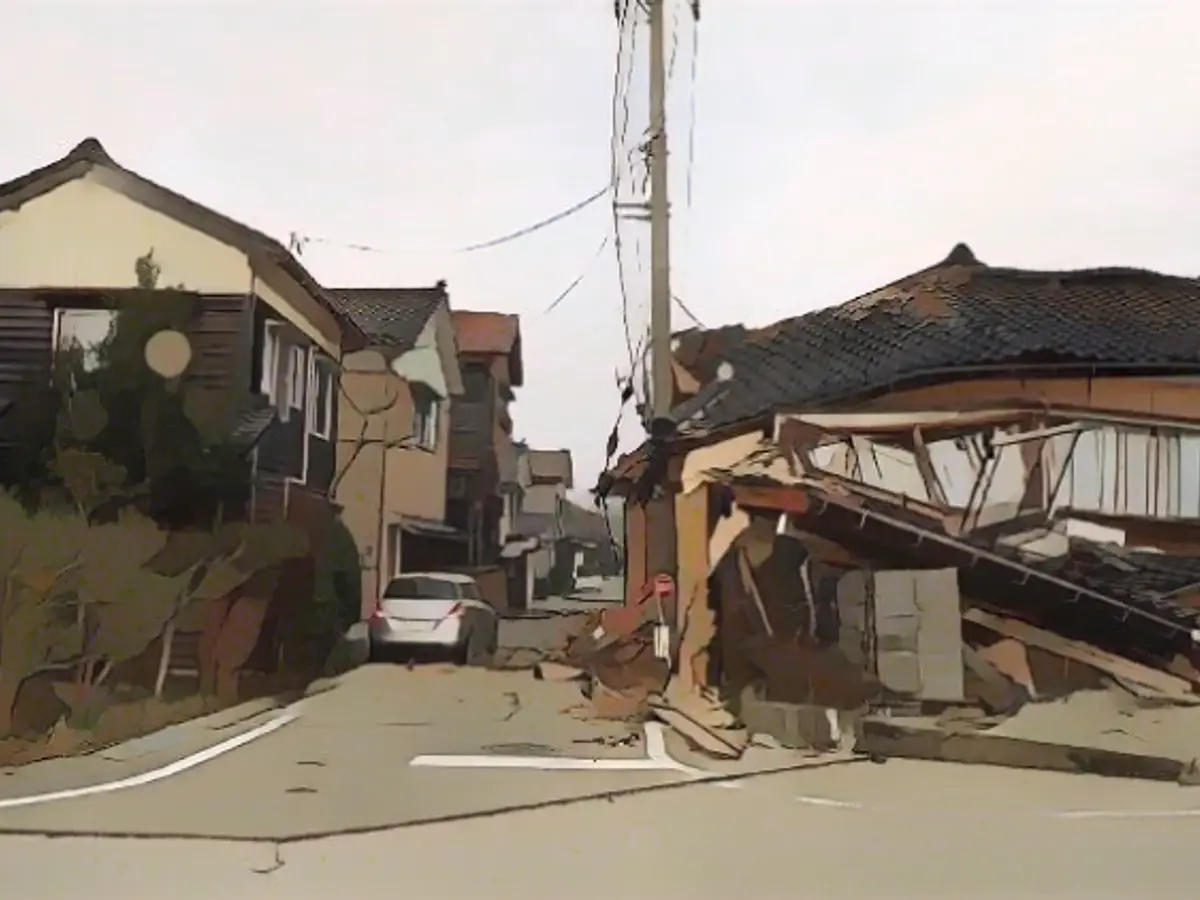Japan's authorities warn of five-meter tsunami
Japan's government sets up a crisis team: a strong quake shakes the country and the authorities issue an urgent warning of a meter-high tsunami. The first waves are already hitting land.
In Japan, a severe earthquake in the center of the country has triggered a tsunami warning. "All residents must move to higher ground immediately," said public broadcaster NHK after the earthquake, which struck at around 16:10 local time (08:10 CET) in the Noto region of Ishikawa Prefecture. The first tsunami waves have already hit land, according to the Japanese Meteorological Agency.
The other Japanese broadcasters also interrupted their programs to warn people of the tsunami. The Pacific Tsunami Warning Center (PTWC) in the USA believes that dangerous tsunami tidal waves are possible within a radius of 300 kilometers from the epicenter of the quake. The national meteorological authority warned of a three-meter-high tsunami.
In the particularly affected prefecture of Ishikawa, a tsunami of up to five meters could even hit the coast, it said. Power was cut to 32,500 households. There have been no reports of casualties so far. According to the government, there were no irregularities at nuclear power plants in the region. The government set up a crisis team.
According to the US earthquake observatory USGS, the earthquake had a magnitude of 7.4. Buildings also began to sway in the area of Tokyo, the capital city with over a million inhabitants. Ishikawa Prefecture had already been shaken by a magnitude 6.3 earthquake at the beginning of May. One person was killed and 49 others were injured.
Frequent earthquakes and volcanic eruptions
Japan is located on the so-called Pacific Ring of Fire, where tectonic plates collide. Earthquakes and volcanic eruptions occur frequently in this area. For this reason, strict building regulations apply in Japan and earthquake drills are held regularly.
On March 11, 2011, the east coast of Japan was hit by a magnitude 9.0 earthquake and a tsunami. The natural disaster claimed the lives of 18,000 people. The tsunami also hit the Fukushima nuclear power plant, causing huge explosions and a meltdown in three reactors. It was the world's worst nuclear accident since the Chernobyl disaster in 1986.
Read also:
- Floods: water levels remain critical in many places
- Snow chaos further restricts Bavaria
- Continuous operation in the flood areas
- Flood situation remains tense in many places
In the face of this unfortunate series of events, the International Red Cross has pledged its assistance to Japan. The earthquake and the subsequent tsunami have caused significant damage to Japan's coastline, particularly in Ishikawa Prefecture, where a tsunami of up to five meters is predicted. Despite the warnings, Tokyo, with its million-plus population, has also experienced shaking buildings due to the earthquake.
Source: www.ntv.de






